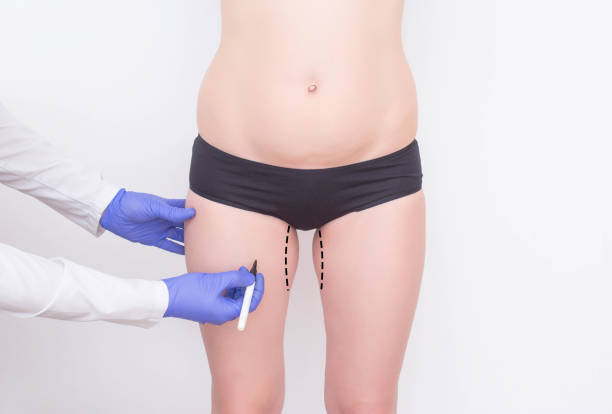Lipolysis, the process of breaking down fats into free fatty acids and glycerol, can be increased through several mechanisms, including:
- Exercise: High-intensity interval training (HIIT) and resistance training significantly boost lipolysis. During exercise, especially in the fasted state, the body relies more on fat stores for energy.
- Hormones:
- Epinephrine and Norepinephrine: These hormones, released during stress or exercise, bind to beta-adrenergic receptors on fat cells, stimulating lipolysis.
- Glucagon: This hormone, released when blood sugar levels are low, promotes lipolysis.
- Growth Hormone: Increases during sleep and exercise, enhancing lipolysis.
- Thyroid Hormones: Regulate metabolism and can increase the rate of lipolysis.
- Dietary Factors:
- Caloric Deficit: Reducing caloric intake below maintenance levels forces the body to tap into fat stores, increasing lipolysis.
- High-Protein Diet: Protein increases metabolism and can promote fat loss, partly by enhancing lipolysis.
- Fasting or Intermittent Fasting: Prolonged fasting periods elevate levels of catecholamines like epinephrine, which stimulates lipolysis.
- Low-Carb Diets: Reducing carbohydrate intake can shift the body toward using fats as the primary energy source, increasing lipolysis.
- Cold Exposure: Exposure to cold temperatures can activate brown fat and increase lipolysis through a process called non-shivering thermogenesis.
- Caffeine and Green Tea Extracts: These substances can enhance lipolysis by increasing catecholamine levels and stimulating metabolic processes.
- Adequate Sleep: Poor sleep can increase insulin resistance and decrease growth hormone levels, both of which can reduce lipolysis.
Implementing a combination of these strategies can effectively increase lipolysis and promote fat loss.

What is the source of energy for lipolysis?
The primary source of energy for lipolysis is adenosine triphosphate (ATP).
Lipolysis itself is the process of breaking down triglycerides (stored fats) into free fatty acids and glycerol. This breakdown is catalyzed by enzymes such as hormone-sensitive lipase (HSL) and adipose triglyceride lipase (ATGL). These enzymes require ATP to function, which is supplied through cellular respiration, primarily from the breakdown of glucose, fatty acids, and sometimes amino acids.
Here’s a brief overview of the process:
- Activation of Enzymes: Hormones like epinephrine or glucagon bind to receptors on fat cells, triggering a cascade that leads to the activation of enzymes like HSL and ATGL. This process requires ATP to activate these enzymes.
- Lipolysis Process: Once activated, these enzymes break down triglycerides into free fatty acids and glycerol. The energy required to maintain the function of these enzymes comes from ATP.
- Energy Utilization: The free fatty acids released during lipolysis can then be transported to other tissues, where they undergo beta-oxidation in the mitochondria to produce more ATP, which can be used as energy by the body.
So, while the process of lipolysis itself requires ATP to function, it ultimately releases fatty acids that can be further oxidized to generate more ATP, contributing to the body’s energy supply.
